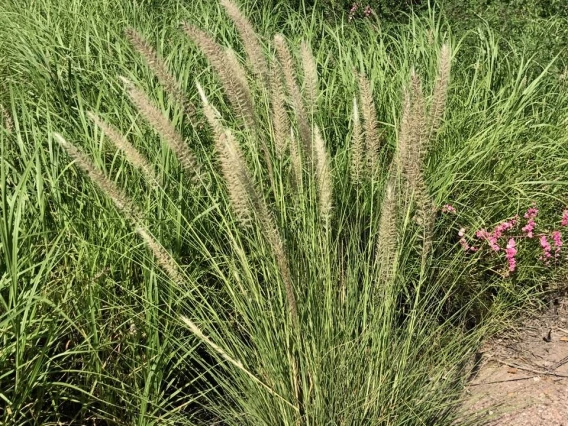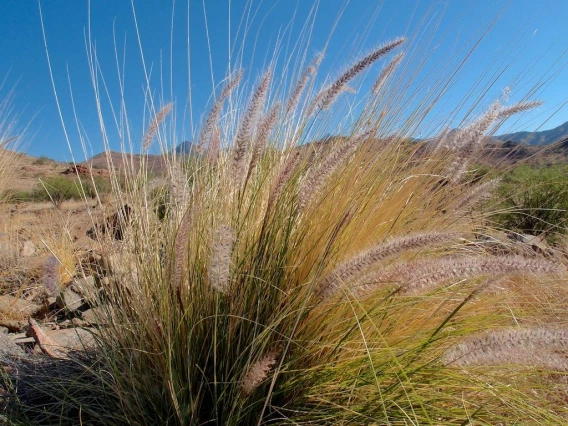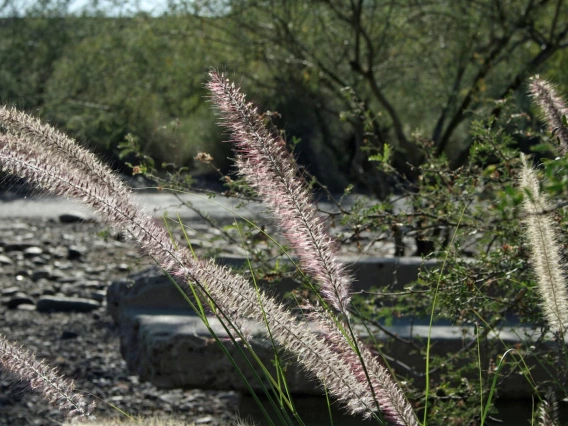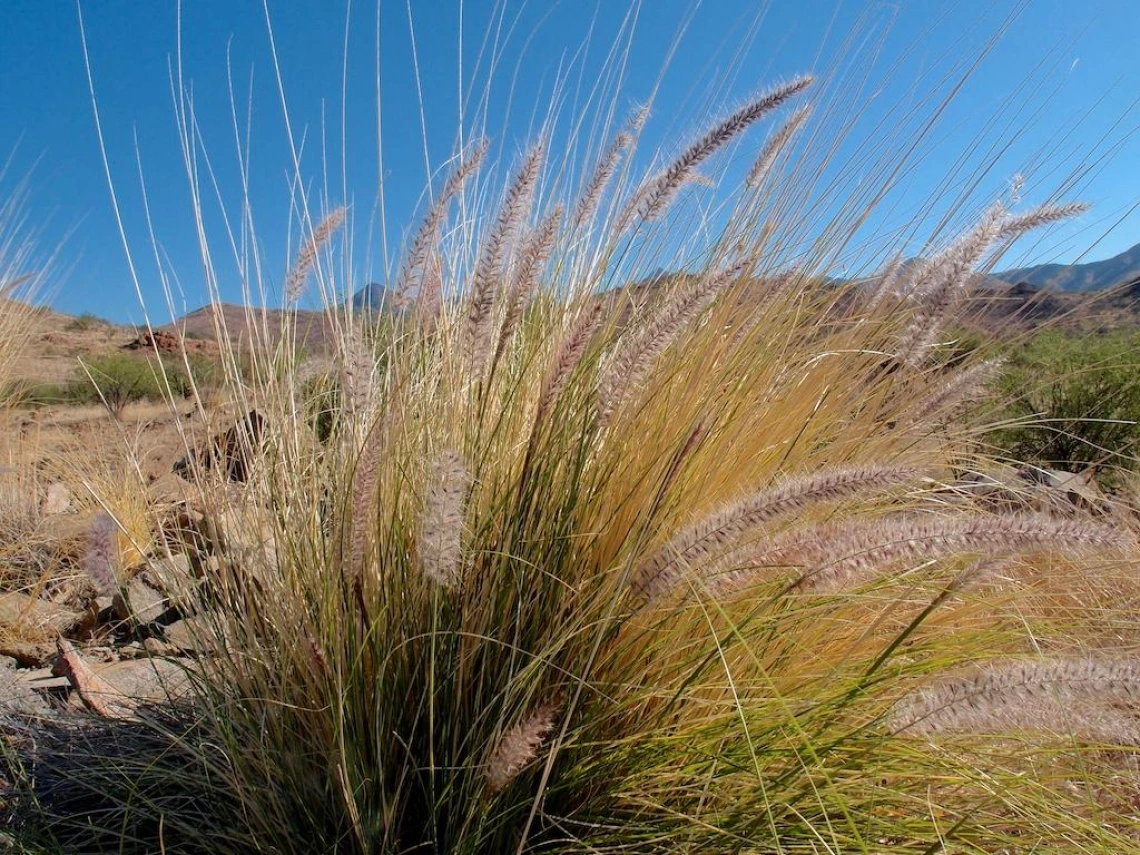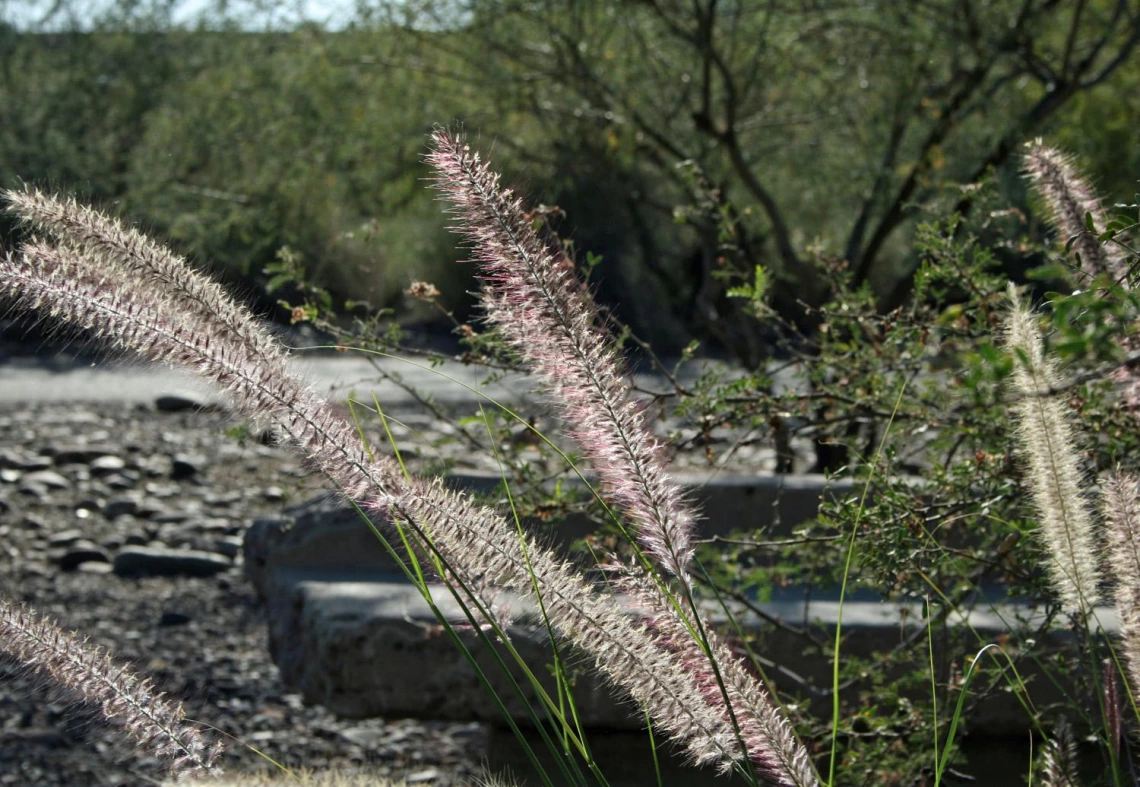Image
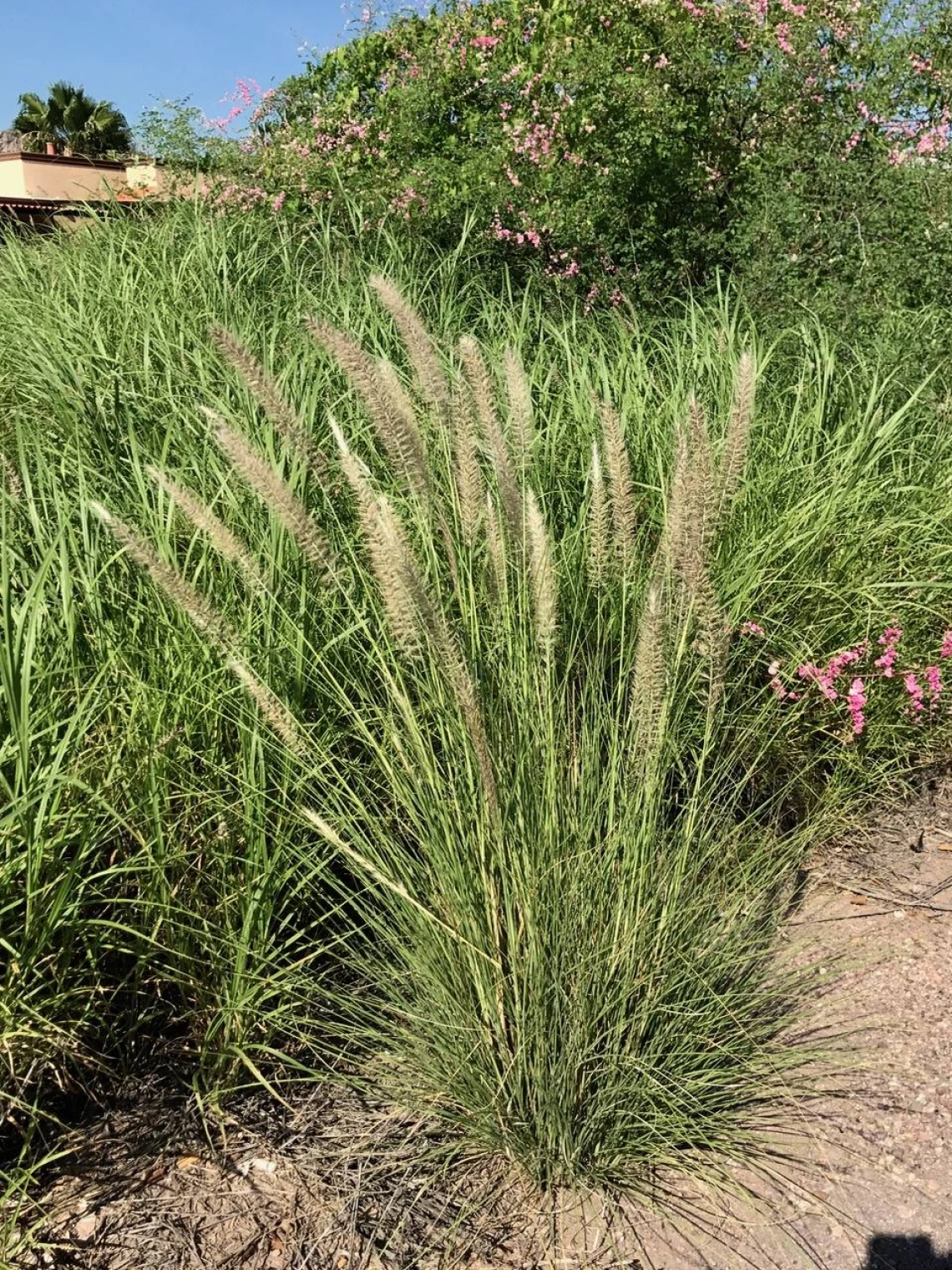
Sue Carnahan
Common Name(s)
Fountain grass
Purple fountain grass
Crimson fountain grass
Scientific Name
Pennisetum setaceum
Family
Grass family (Poaceae)
Reasons for concern
Fountain grass forms dense patches that outcompete native plant species, block waterflow, and alter habitats for native animals. Like buffelgrass, it is fire adapted, meaning it provides dry fuel for fires and continues to grow after the fire, creating more dangerous fires and more fountain grass. It is allergenic and poisonous when ingested
Classification
Noxious weed
Botanical description
Perennial bunchgrass with long, purple inflorescence plumes
Leaves
green, 8 inches - 2 feet, sometimes covered in a blueish gray waxy coating
Stem(s)
16 inches- 5 feet stems branch from a central clump and grow vertically and droop a the top where the inflorescence is.
Inflorescence
3-12 inches long arched or vertical cylindrical spikes of pink to burgundy spikes. These spikes are covered by smaller spikes, giving them a “fuzzy” appearance.
Native to
Eastern mediterranean
Where it grows
Fountain grass grows in washes, roadsides, disturbed areas, yards, and steep slopes
Lifecycle
Perennial
Reproduction
fertilized or unfertilized seeds
Weedy Characteristics
Seeds can remain viable in the soil for at least six years.The seeds are carried by wind, water and on animals and clothes and shoes
Look-alike Plants
Deergrass (Muhlenbergia rigens) can be distinguished by its smaller, thinner white to cream colored inflorescence plumes. The leaves are much thinner than fountain grass.
Control Strategies
Fountain grass is sold in nurseries, so avoid using this plant for landscaping. Remove it manually by pulling the entirety of the plant, including the roots. Repeat manual treatment is necessary. Rock hammers are often required to break the roots free from among the rocks. To treat it chemically, apply Glyphosate at .5 pints/acre or Imazapyr at 2 pints/acre.

